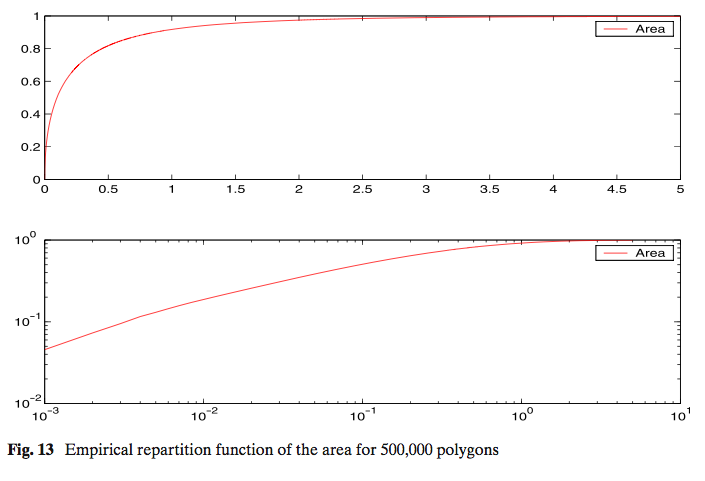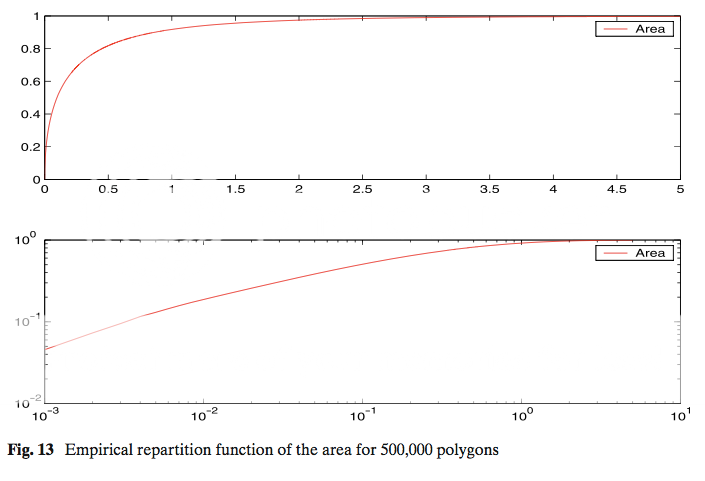Here are some results for a particular random model of lines.
The equation for any line in the plane may be written $p=x\cos\theta+y\sin\theta$, with $0\leq\theta<\pi$.
The Poisson line tessellation is a random process where one places lines randomly according to a Poisson point process with parameter $\tau/\pi$ in this $(p,\theta)$ strip and with uniformly distributed orientation. This generates a system of generic random lines almost surely. I'm not sure what the state of the art is, but according to this 1964 paper by R.E. Milesthis 1964 paper by R.E. Miles (see also its sequelits sequel which contains sketches of proofs), the first three moments of the distribution of areas of the polygons resulting from the intersections of these lines are $\pi/\tau^2$, $\pi^4/2\tau^4$ and $4\pi^7/7\tau^6$.
Some numerical results for the first seven moments of the area (with parameter 1 so that $\tau=\pi$ in the notation above) from generating 250,000 polygons are in a 2007 paper by Michel and Paroux2007 paper by Michel and Paroux: 0.31813 (exact is $1/\pi\approx0.31831$), 0.5009 (exact is $1/2$), 1.8042 (exact is $4\pi/7\approx1.7952$), 11.47, 113.9, 1610, 29400 (where I've rounded off some unnecessary digits from their Fig. 8). They also have a figure showing the cumulative distribution function for the areas:
The behavior near zero area is apparently explained by the following asymptotic result for the probability density function for the areas (part of Theorem 6 in Miles's paper above): $P(A\in dx)=c\tau A^{-1/2}+O(\tau^2)$, where $c=\frac{1}{3\pi}\int_0^\pi d\phi\int_0^{\pi-\phi}d\psi \sqrt{2\sin\phi\sin\psi\sin(\phi+\psi)}$ which Mathematica tells me is about 0.32311.


